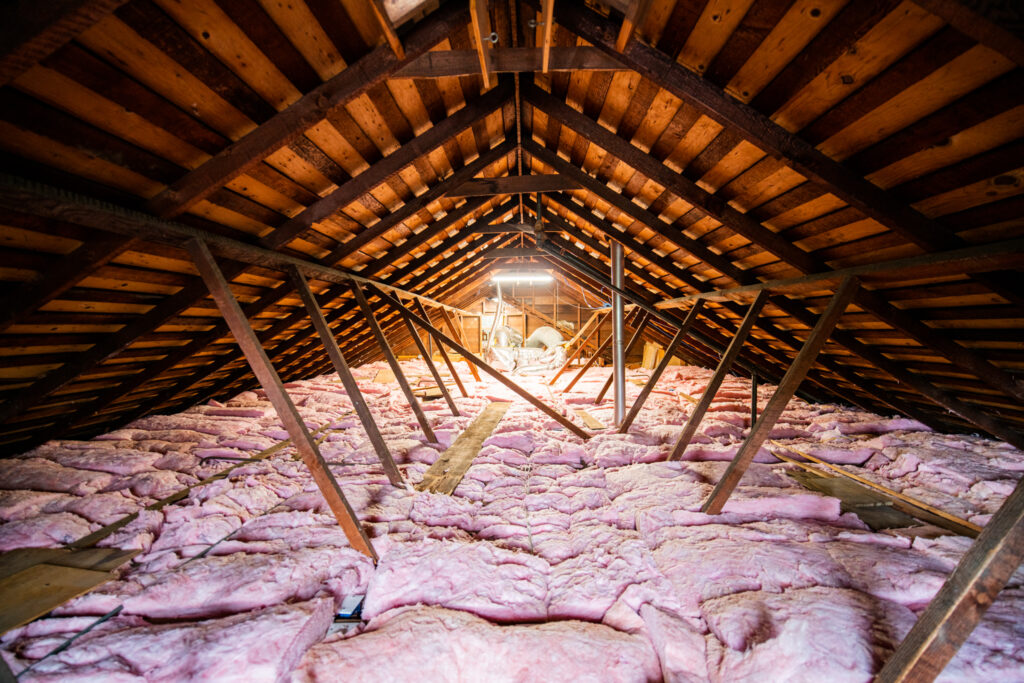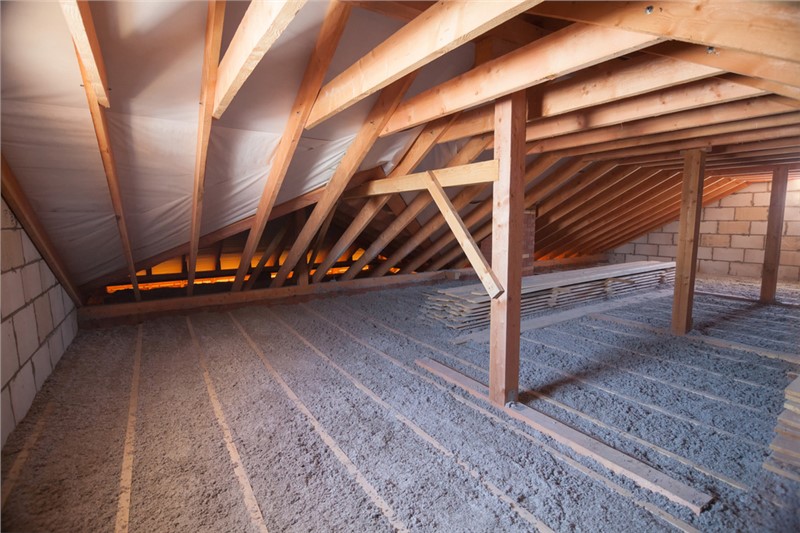Attic Insulation DFW: The Key to Lower Energy Bills and Improved Home Convenience
Wiki Article
Discover the Different Types of Attic Insulation and Their Unique Benefits for Your Home's Energy Performance

Fiberglass Insulation
Fiberglass insulation is among the most generally made use of products for attic insulation as a result of its exceptional thermal efficiency and cost-effectiveness. Made up of tiny glass fibers, this material properly traps air, creating an insulating obstacle that assists maintain consistent indoor temperatures. Its high R-value per inch makes it particularly reliable at withstanding warm transfer, which is essential for power conservation in homes.
Setup of fiberglass insulation is reasonably uncomplicated, frequently offered in batts or loose-fill kinds, fitting various attic setups. Furthermore, it is non-combustible and immune to wetness, decreasing the danger of mold advancement. This durability contributes to its durability, making fiberglass a viable long-term financial investment for house owners.
In addition, fiberglass insulation is frequently produced from recycled materials, which enhances its eco-friendliness. The material can additionally contribute to soundproofing, decreasing noise transfer in between spaces. While it is important to wear protective equipment throughout installment to stay clear of irritation from the fibers, the general advantages of fiberglass insulation, consisting of energy savings and ecological considerations, make it a prominent choice for enhancing attic performance and promoting a comfy living environment.
Spray Foam Insulation
Spray foam insulation is a very reliable choice for attic room insulation, known for its exceptional air sealing and thermal performance. This innovative insulation product is made up of a blend of isocyanate and polyol material, which, when incorporated, broadens rapidly to fill spaces and dental caries in the attic room space. Its capability to follow various surface areas makes certain a constant barrier against air leaks, considerably lowering heat loss during chillier months and warmth gain during warmer periods.Among the vital advantages of spray foam insulation is its high R-value per inch, which implies it provides superb thermal resistance in a fairly slim application. This is specifically helpful in attic rooms where area is typically limited. In addition, spray foam can help decrease moisture buildup, lowering the risk of mold and mildew and mildew growth, which can be harmful to both the structure and interior air top quality.
While the first expense of spray foam insulation might be greater than standard options, its long-term power cost savings, paired with increased convenience and enhanced home worth, make it a beneficial investment for property owners looking for boosted power effectiveness. Attic Insulation DFW. Overall, spray foam insulation attracts attention as an effective remedy for optimizing attic insulation
Cellulose Insulation

Cellulose insulation is a popular selection for attic insulation, largely made up of recycled paper products treated with fire retardants. This eco friendly option is understood for its exceptional thermal performance, effectively reducing heat transfer in both summer season and winter season. The dense make-up of cellulose permits it to fill up voids and spaces in attic room rooms, supplying a seamless obstacle against air leakages.
One of the considerable benefits of cellulose insulation is its capability to resist mold and parasites, owing to the fire resistant therapies used during production. In addition, it boasts a high R-value per inch, which translates right into remarkable energy efficiency. Homeowners can anticipate lower cooling and heating expenses as an outcome of boosted insulation.
Installment is typically achieved via blowing loosened cellulose into the preferred location, allowing for a effective and fast procedure. This method additionally minimizes interruption to the existing framework. Furthermore, cellulose insulation has a reasonably reduced environmental effect, as its production process utilizes recycled products, adding Resources to sustainable structure methods.
Rock Woollen Insulation
Amongst the numerous alternatives for attic insulation, rock wool, likewise called mineral woollen, stands apart as a result of its excellent thermal and acoustic efficiency. Made from recycled or all-natural products, rock woollen is developed by thawing rock and spinning it right into fibers, resulting in a product that provides superb insulation buildings.Among the substantial benefits of rock wool insulation is its high R-value, which indicates its effectiveness in resisting heat flow. This characteristic not only boosts power performance yet additionally adds to keeping a comfy interior temperature level year-round. Furthermore, rock wool is naturally fireproof, making it a safer alternative for homes as it can stand up to high temperature levels without melting or launching harmful fumes.
Additionally, rock wool insulation stands out in soundproofing capabilities, successfully reducing sound transmission between spaces and from outside resources. In general, rock woollen insulation offers an extensive service for improving energy effectiveness, security, and you can look here convenience in domestic setups.
Glowing Obstacle Insulation
Radiant barrier insulation functions as a reliable solution for lessening warmth transfer in attics, specifically in warmer climates. This sort of insulation works by showing convected heat far from living spaces, thus minimizing the quantity of warm that enters a home during heat - Attic Insulation DFW. Generally made up of a very reflective material, such as aluminum foil, glowing obstacles are mounted in attic rooms, facing the roofing system, where they can intercept inbound warm from the sunlightThe main benefit of glowing obstacle insulation is its capability to reduced cooling costs. By mirroring warm instead of absorbing it, glowing obstacles can aid keep a more stable indoor temperature, minimizing the workload on a/c systems. This performance equates into reduced energy bills and increased comfort for property owners.
In addition to energy savings, glowing obstacles can also contribute to improved interior air top quality. By lowering warm accumulation, they help minimize moisture degrees, which can avoid mold and mildew development and boost overall air circulation. When set up correctly, glowing obstacle insulation can be a vital enhancement to any type of energy-efficient home, making it a Read More Here worthwhile factor to consider for house owners looking to boost their attic insulation approach.
Conclusion
In final thought, understanding the different types of attic insulation-- fiberglass, spray foam, cellulose, rock wool, and radiant obstacles-- makes it possible for homeowners to make enlightened decisions regarding energy effectiveness. By picking the ideal insulation product, substantial decreases in energy costs can be accomplished, along with improvements in interior comfort.

In final thought, understanding the different types of attic room insulation-- fiberglass, spray foam, cellulose, rock wool, and glowing barriers-- makes it possible for homeowners to make enlightened choices relating to energy efficiency.
Report this wiki page